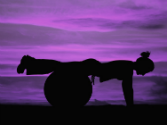 According to My Optimum Health.com, more than 13 million people in the United States — male and female, young and old — experience incontinence. Women experience incontinence twice as often as men. Pregnancy and childbirth, menopause, and the structure of the female urinary tract account for this difference. While sometimes surgery or other procedures might be required to treat this issue, oftentimes a first step (besides pelvic floor exercises) is our nutrition. To quickly review the most common types of incontinence, the following is a brief recap:
According to My Optimum Health.com, more than 13 million people in the United States — male and female, young and old — experience incontinence. Women experience incontinence twice as often as men. Pregnancy and childbirth, menopause, and the structure of the female urinary tract account for this difference. While sometimes surgery or other procedures might be required to treat this issue, oftentimes a first step (besides pelvic floor exercises) is our nutrition. To quickly review the most common types of incontinence, the following is a brief recap:
Stress incontinence – Leakage happens with coughing, sneezing, exercising, laughing, lifting heavy things, and other movements that put pressure on the bladder. This is the most common type of incontinence in women. It is often caused by physical changes from pregnancy, childbirth, and menopause. It can be treated and sometimes cured.
Urge incontinence – This is sometimes called “overactive bladder.” Leakage usually happens after a strong, sudden urge to urinate. This may occur when you don’t expect it, such as during sleep, after drinking water, or when you hear or touch running water.
Mixed incontinence –This is a combination of both stress and urge incontinence. Leakage can happen for reasons given above.
We certainly shouldn’t be shocked that too much of any fluids — whether water, milk, or other beverages — can be a problem for people with incontinence. However, we can’t solve incontinence by dramatically cutting back on fluids. This can lead to dehydration, constipation, and kidney stones, which can actually irritate the bladder and make symptoms worse. Like most things, balance is key and many of us have heard that about two liters of fluid a day, which is eight 8-ounce glasses is a good rule of thumb. However, according to physical therapist Barbara Green, we don’t necessarily even need that much. She recommends drinking enough water to keep urine very lightly colored. The right amount may differ for each individual.
Coffee and tea are some of the first beverages to consider if we want to minimize incontinence. This is because they both contain caffeine, which like alcohol, is both a diuretic and a bladder irritant. “Caffeine can directly cause irritation of the bladder lining.” said Green. “Those who deal with any kind of incontinence will do better if they reduce their caffeine consumption.” She said she doesn’t believe decaf coffee drinkers fair much better, and so suggests cutting back or avoiding coffee or tea altogether. This is hard for me to swallow (a pun!) since eliminating coffee is too difficult for me to fathom at this point in my life…so for now I will stick with limiting my cup of half-caff to 1-2 a day.
Interestingly, sugar might also be a culprit. Although its connection to incontinence has not been as well-studied as caffeine, evidence does suggest that sugar and sweets, including those that contain honey, corn syrup, and fructose, can also aggravate your bladder. And artificial sweeteners may be no better; some research indicates they contribute to urge incontinence, and we know that they can be troublesome nutritionally. Green says that again, balance is key…we don’t have to cut out sweets completely, just limit the amount we eat.
Speaking of sweets, a can of Coke, which contains both caffeine and sugar, is a bladder irritant because of its carbonation as well. Sodas or fizzy drinks (anything carbonated) have been shown to worsen some incontinence symptoms. Green suggests limiting “bubbly beverages” to see if it might help with symptoms. And while we are pointing fingers, studies have also suggested that people who avoid spicy foods, like spicy curry, chili pepper, and cayenne pepper, may reduce their urinary incontinence symptoms as well. These hot spices may be triggers for people with incontinence or overactive bladders, which is why it is often a suggestion for those with symptoms of incontinence to limit them. Fruits and vegetables can only be a good thing, right? Actually, while citrus fruits are high in anti-oxidents and provide plenty of vitamin C, they can actually be a problem for people with incontinence (especially urge incontinence). Acidic foods and beverages, such as grapefruits, oranges, limes, lemons, and even tomatoes, can irritate the bladder, and may worsen incontinence symptoms.
What to do if we have mild stress incontinence issues? It’s important to eat well and exercise. While this sounds obvious, it is amazing how little changes can affect our health. For those who deal with incontinence (even mildly), it is really no small thing. My feeling is whatever I can do in small ways now to help control this issue, I will try to do, so as to at least postpone (if not avoid) surgery or more invasive measures. Eating a healthy, balanced diet that includes at least five portions of a variety of fruit and vegetables, plus plenty of fiber, also helps to prevent constipation, which is another risk factor for urinary incontinence.
Fewer than half of people who have urinary incontinence ever talk to a doctor about it. Sometimes it is out of shame or embarrassment. Others simply don’t realize this is a medical condition that can often be cured or greatly improved. In many cases, treatment is successful and does not require surgery. The hardest step for some people is telling a doctor about the problem. But awkwardness should never get in the way of our health. Your primary care doctor or ob/gyn doctor may be able to help you or may refer you to one of these specialists:
- Urogynecologist – a gynecologist with advanced training in incontinence
- Urologist – an expert in treating problems of the urinary tract
- Gynecologist who specializes in pelvic surgery





Speak Your Mind